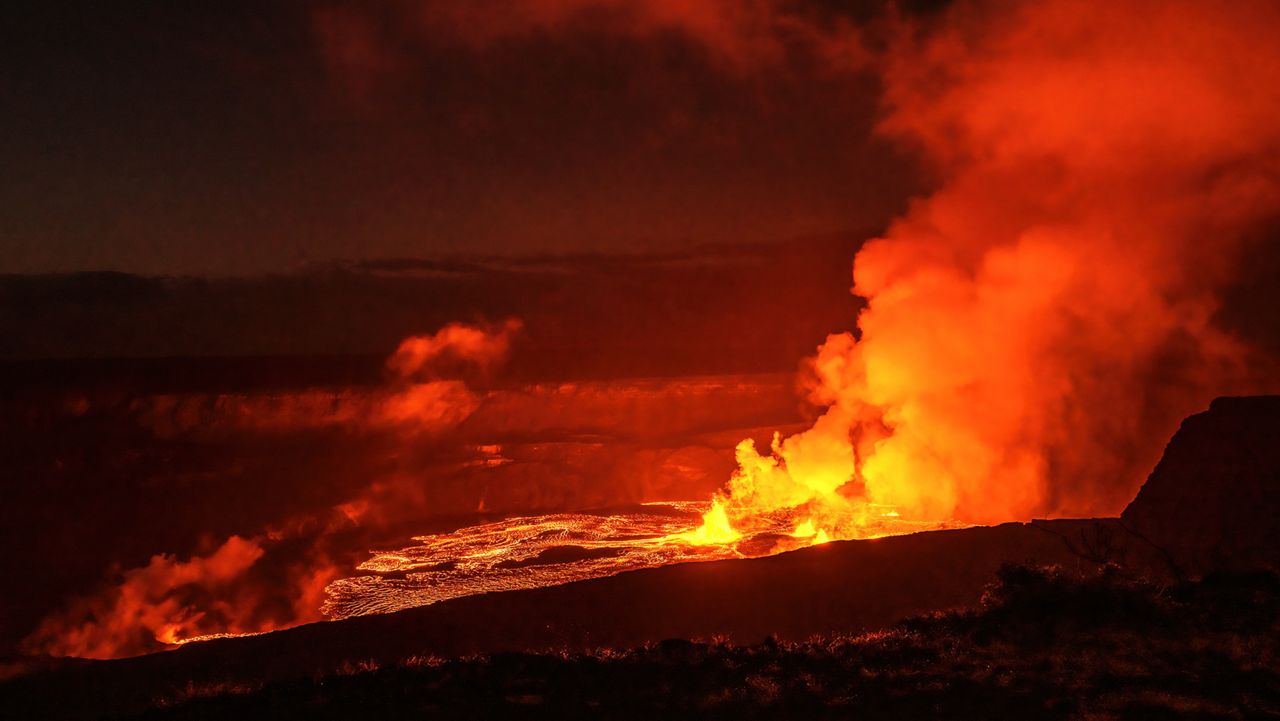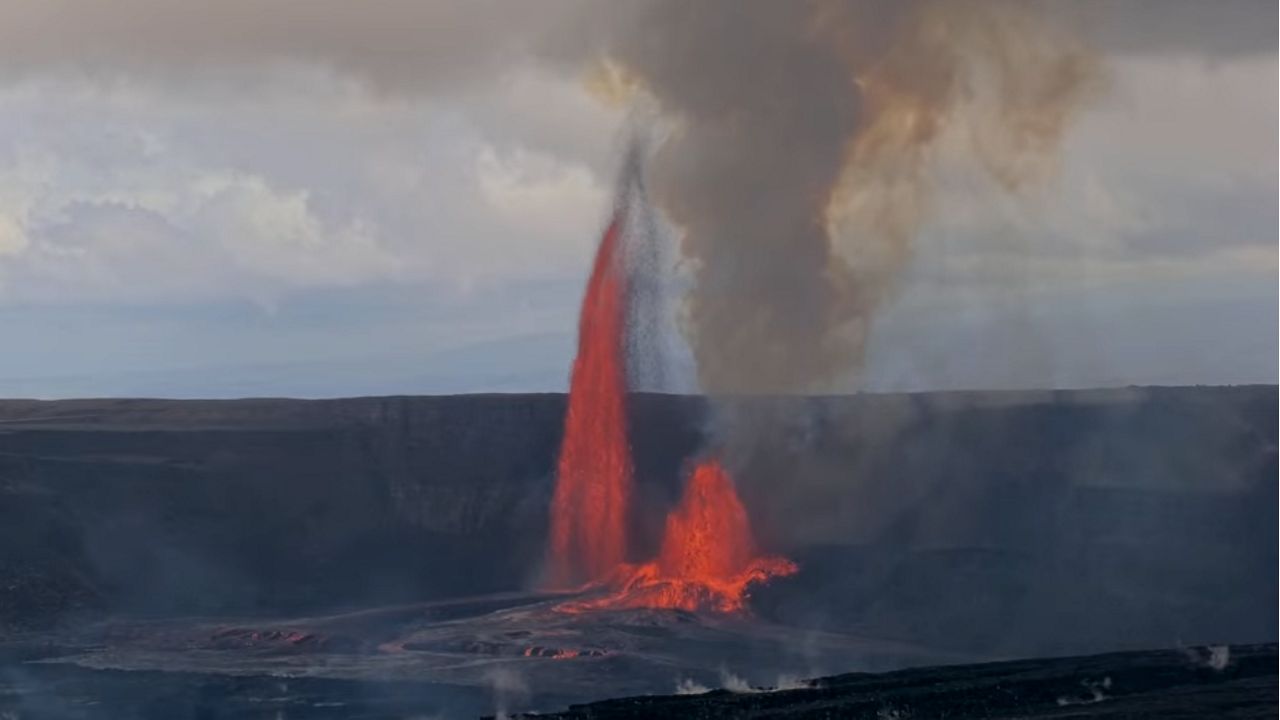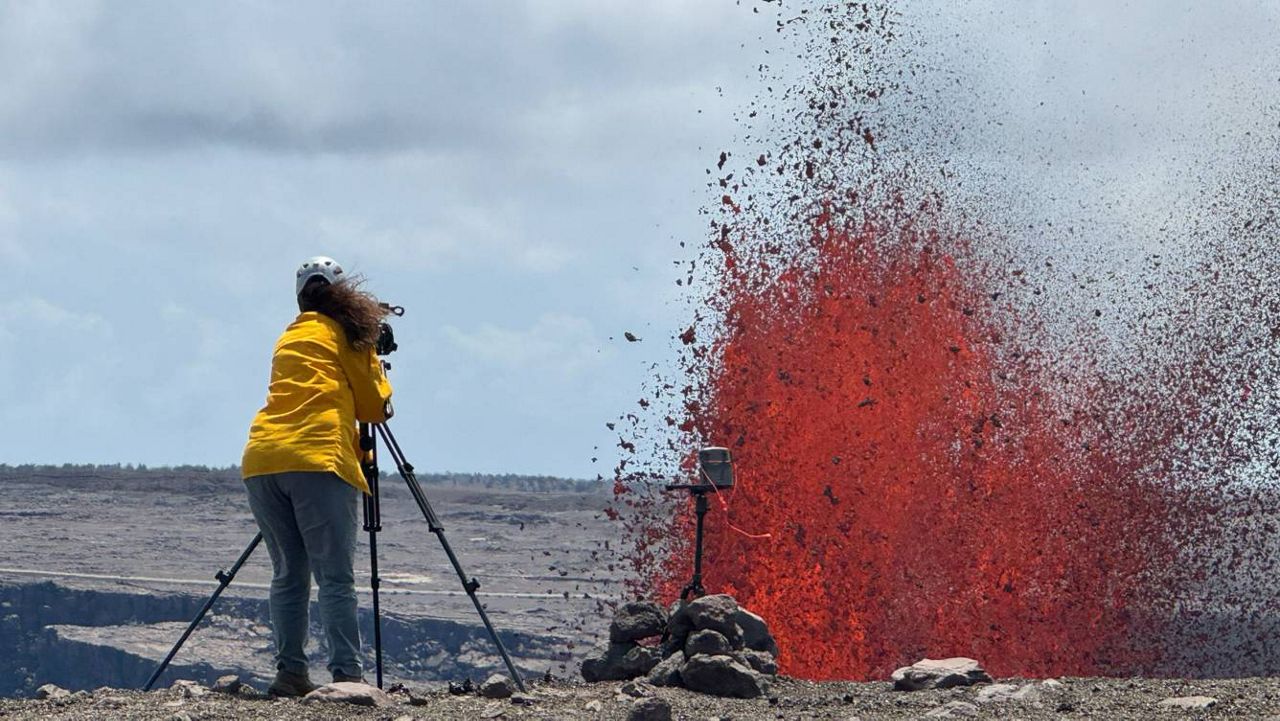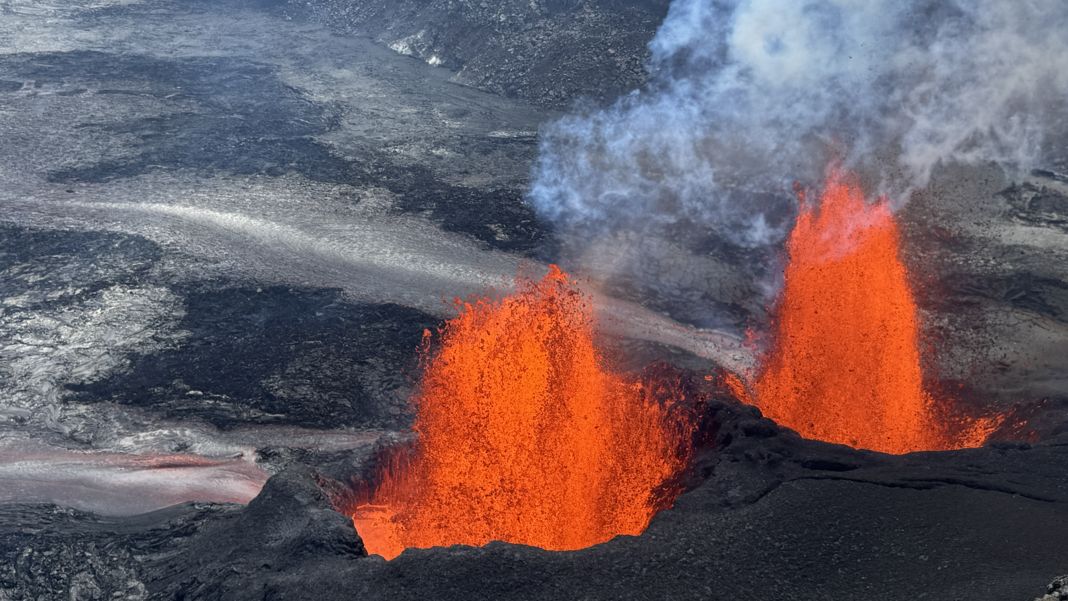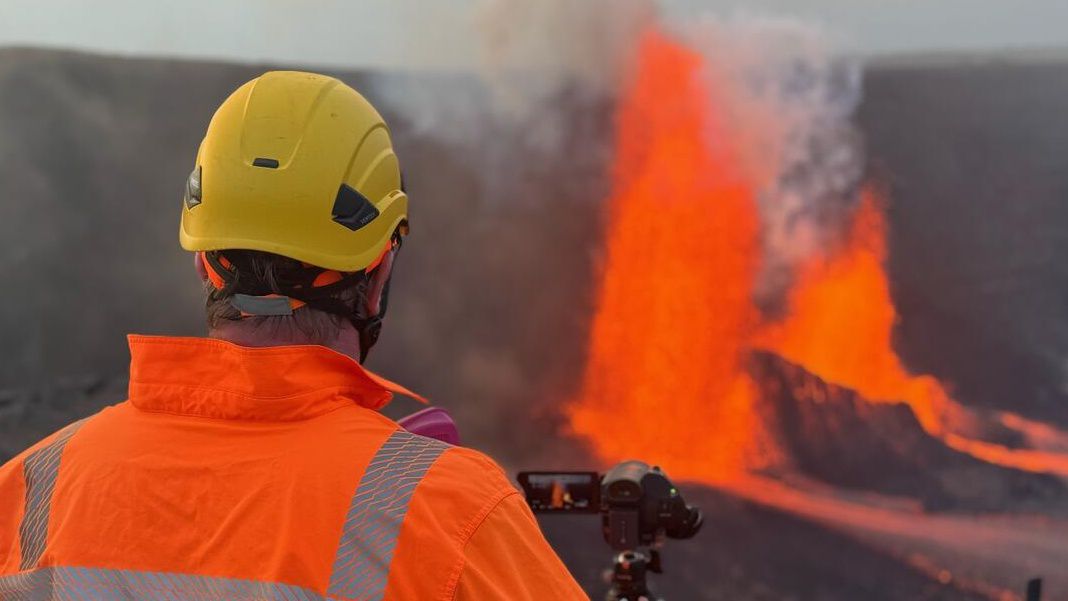HAWAII VOLCANOES NATIONAL PARK, Hawaii — Volcanic activity at Hawaii’s Kilauea has paused, according to the Hawaiian Volcano Observatory’s Monday evening update.
The eruption started Wednesday, June 7, within the Halema‘uma‘u crater in the summit caldera. Fountains of lava reached heights of 200 feet, spewing lava onto the crater floor and creating a “lava lake.” Lava fountains decreased later that day to heights of 13 to 30 feet. A week after starting, volcanic activity started to decrease significantly.
On Monday afternoon, effusion and lava fountains from the last remaining eruptive vent rapidly declined. Until this time, the lava effusion from this vent was vigorous. After the vent stopped erupting, circulation in the lava lake slowed. Some previously erupted lava continues to flow on the crater floor.
Along with the decline in vent activity, seismic tremors at the summit started dropping. The tremors are associated with subsurface fluid movement and eruptive activity.
Also, the summit tilt quickly switched to inflation after tracking as deflation since Saturday, June 17. The inflation and deflation of the summit refers to changes in pressure in the Kilauea summit magma chamber, situated below the caldera. It is normal to see minor cycles of inflation and deflation at Kilauea that do not result in any eruptive changes.
The last three eruptions at the Kilauea summit lasted five months, 14 months, and two months.
Michelle Broder Van Dyke covers the Hawaiian Islands for Spectrum News Hawaii. Email her at michelle.brodervandyke@charter.com.




